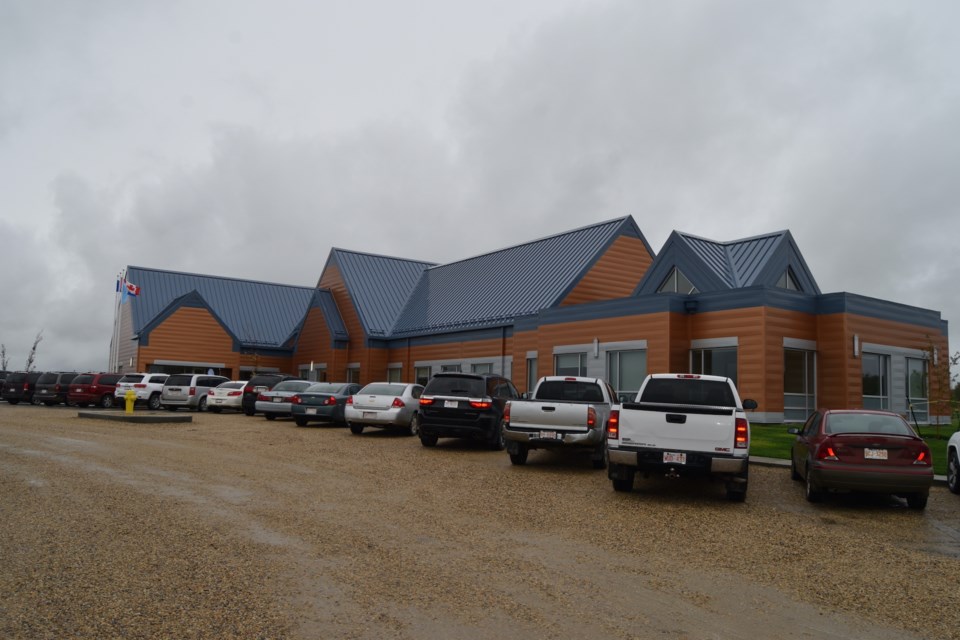SANGUDO - Lac Ste. Anne County (LSAC) has settled the lawsuit against the companies involved in the municipal office building's design, engineering, project management and construction for just short of $8.5 million.
County councillors voted to accept the settlement offer following an in-camera session at their Dec. 15 meeting.
The settlement details are confidential, and the Jan. 2 media release announcing the settlement of $8,456,000 did not name the companies involved. However, a CBC report named them as Colliers Project Leaders, A&E Architectural and Engineering Group, Casman Building Solutions, Arrow Engineering, Roterra Piling and P. Machibroda Engineering Ltd.
The media release stated the county would invest the funds in a high-interest investment savings account while the municipality evaluated options for the future of the building.
The municipality announced it was pursuing legal action against the companies in 2019, and the decision to accept the settlement followed a lengthy mediation process.
Reeve Joe Blakeman said it was a simple decision.
"[The arbitrator], who has had a lot of experience dealing with situations and our legal team, recommended that we accept [the settlement]," he said. "Of course, you hope and want more, but $8.5 million is a lot of money. We could have decided to continue [with the legal action] and spend even more money in hopes that we would get more, but you are rolling the dice. There is always the chance that you come away with nothing."
He estimated that the municipality, between the technical reports detailing the condition of the building, consultant and legal fees, had spent about $600,000, of which about $350,000 were legal fees.
Building's history
The more than $11.7 million 25,000-square-foot administration building about two kilometres south of the Hamlet of Sangudo opened its doors in 2017. Funding for the building came from a combination of provincial grants, the majority being the Municipal Sustainability Initiative (MSI) and a short-term borrowing debenture, which has been paid in full.
The county constructed the building to consolidate its operations, which had been taking place in three buildings in Sangudo. A 2005 review found the main office building had "major structural flaws," including an unsafe roof, leaking windows, mould, and an "unsanitary" sewage system, among other defects. The building also needed more storage space, so they stored their paper records in three unheated containers outside the building.
Before construction, LSAC residents debated on the location of the building, with many people wanting it closer to the Onoway/Rich Valley area. Opponents of the building also objected to the design and scale, saying it was too extravagant and expensive.
Residents also launched two petitions to stop construction. The building's opening was also delayed several times due to construction delays caused by the weather and building defects.
In mid-May, council approved a resolution to start planning for the construction of a new administration building.
A media release at the time stated that council made the difficult decision due to the building's significant structural issues, including extensive cracking of the walls and the ceiling bowing and sloping of floor slabs, separation of walls from each other and the foundation, as well as damage to the vapour barrier and fireproofing and separations. Other problems noted include notable gaps in the building, causing air infiltration and, heat loss and damage to the exterior cladding.
In a May 31 interview with the Leader, Blakeman said council opted to start the planning process for a new administration building after extensive expert investigations and assessments determined that, in the long run, it would be more cost-effective to start from scratch than attempt to repair the structure, if it was even possible.
Issues with the building predate its opening, as staff observed slab heaving and drywall cracking during its construction phase.
According to the May LSAC media release, geotechnical experts determined the cause was moisture changes to the high plastic clay underneath the building, which caused the floor to move when the clay expanded and contracted because of changing moisture levels.
It also stated that the county attempted to remedy the situation by redirecting the surface water, which seemed to have resolved the issue, and the county expected to have the deficiencies in the building repaired through the warranty.
Unfortunately, Blakeman said in May that the designers and builders did not address the issues.
Going forward
Blakeman said that construction of a new municipal office building, despite many discussions on social media, will take time.
"The building is safe, and more than likely, this council will not make the decision, but the next one or even the one after that," he said, adding the process will also be different. "This building was supposed to last us 40 years or more. That clearly will not be the case, but again, we have taken great pains to ensure the building is safe, and it is not something that has to be done overnight."
Blakeman said while the $8.5 million might not cover the construction cost of a new building, it should go a long way.
"The original $12 million was for everything from the land purchase to bringing in the necessary infrastructure, such as the sewer and water lines from Sangudo," he said. "I'm not sure if a new administration building would go on the same site; that will be up to future councils, but I hope that infrastructure will not be lost. You can always use it for something, whether for public works or a [fire hall]."




